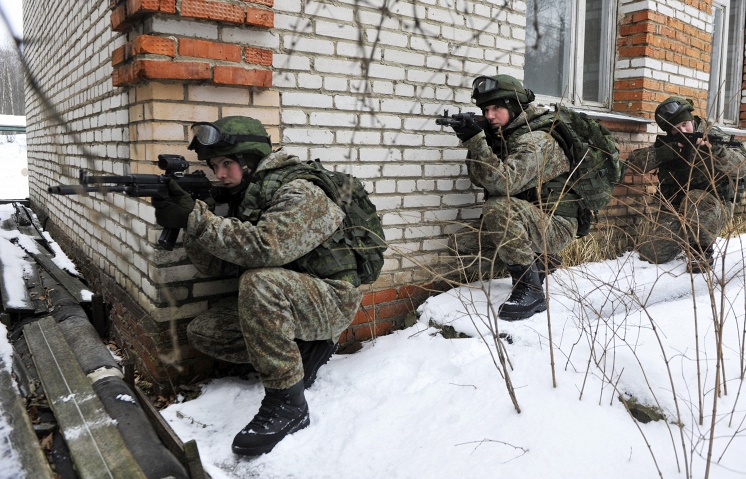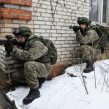
Insurgents in Ingushetia Remain Active
Publication: Eurasia Daily Monitor Volume: 12 Issue: 191
By:

Over the past ten years, the Russian government has repeatedly claimed that the situation in the North Caucasus has stabilized (Regnum.ru, October 14). Speaking at a meeting of the National Antiterrorist Committee (NAK) in Nalchik, Kabardino-Balkaria, on October 13, Federal Security Service (FSB) head Aleksandr Bortnikov said that since 2006, the authorities have sentenced 5,475 people for crimes related to terrorism and neutralized 2,134 “bandits,” while an additional 1,504 militants were put on the Russian and international wanted lists (Magas.ru, October 13). Non-governmental organizations also report that the number of militant attacks have plummeted since the end of 2010 (Memohrc.org, October 1, 2014), but say that normalization of the situation in the region is nowhere in sight.
The Russian government recently launched multiple special operations against rebels reportedly affiliated with the Islamic State (IS) in the North Caucasus. The operations took place simultaneously in several republics of the region—Chechnya, Dagestan and Ingushetia. The counterterrorist operations in Ingushetia have remained somewhat outside mainstream media coverage.
The press service of the Ingush branch of the FSB reported, on October 12, that a counterterrorism operation regime was introduced that day in the town of Karabulak and the villages of Ekazhevo, Plievo, Barsuki, Gazi-Yurt and Yandare (Internovosti.ru, October 12). The authorities took this step after receiving information that members of the armed Islamic movement’s members were present in one of these towns. That same day, the NAK reported that government forces killed three members of illegal armed groups and arrested four other suspects (Interfax, October 12). The authorities managed to identify two out of the three slain rebels—28-year-old Magomed Pliev and 25-year-old Aslan Dyshnoev, who had long been on the Russian federal wanted list (RIA Novosti, October 12). The police also found three handguns, one machinegun, three F-1 hand grenades and two home-made hand grenades, as well as a radio and two improvised explosive devices (IED) (RIA Novosti, October 12).
The news reports about “three killed and four captured” individuals suggested that the authorities captured the suspected militants at the site of the special operation. In reality, the FSB branch in Ingushetia detained the suspects at their homes and took them to an unidentified location. Residents of the village of Surkhakhi in Ingushetia’s Nazran district said they could not find three members of the same family, Tagir, Abo and Alikhan Bogatyryov, who were arrested during the October 12 counterterrorism operation. Government officials denied they knew of the whereabouts of the arrested individuals (Kavkazsky Uzel, October 13).
Eyewitnesses said that when the government agents were arresting the suspects, their families were told the suspects would be taken to the headquarters of the FSB branch in Ingushetia, located in the city of Magas. However, the Ingush FSB told the suspects that the agency did not have them and advised the relatives to ask the republican Ministry of Interior. However, Ingushetia’s interior ministry also denied involvement. After two days, it became known that the suspected militants were, indeed, being held by the interior ministry: an anonymous ministry source told journalists that “four residents of Ingushetia who were arrested during the counterterrorism operation on October 12 are currently being held in detention by the law enforcement agencies of the Republic of Ingushetia. They are suspected of assisting members of illegal armed groups.” The Ministry of Interior source said the government is currently considering launching criminal proceedings against them on the basis of Article 208 of the Russian Criminal Code (Kavkazsky Uzel, October 15). That article covers organizing an illegal armed group or participating in it and envisages imprisonment from eight to fifteen years or restricting a convicted person’s freedom for one to two years (Zakonrf.info, accessed October 22).
Four days after the special operation in Ingushetia, the NAK announced that police had uncovered a cache of weapons and ammunition in the village of Surkhakhi that included two anti-tank guided missile launchers, a heavy machine gun, five machine guns, more than 5,000 rounds of ammunition, a large number of hand grenades, fuses and grenades for grenade launchers, masks, walkie-talkies, and more than 20 kilograms of explosives (TASS, October 16). According to the police, the weapons cache belonged to members of the so-called Nazran group who were killed by the FSB during the October 12 counterterrorism operation.
The incident was interesting because there had been no sign of militants in that part of the republic for quite some time, and suggests the Ingush jamaat is trying to expand its presence to Ingushetia’s Nazran district. This means the jamaat is continuing to operate despite strong pressure from the government on anyone who sympathizes or assists the rebel forces.
After the October 12 counterterrorism operation, Ingushetia’s governor, Yunus-Bek Yevkurov, addressed the residents of the republic, urging young people to come to their senses and not to give in to the calls of the radicals to join the ranks of the militants. Yevkurov also urged parents of those who had joined the insurgency to do everything they could to force them to return to normal civilian life (Magas.ru, October 13).
Thus, local insurgents have started reappearing in Ingushetia, and Moscow may face unpleasant developments in this part of the North Caucasus. The current generation of militants, who are affiliated with the Islamic State (IS), are even more dangerous than the previous generation of the Caucasus Emirate’s supporters, because the IS places no limits whatsoever on the methods of warfare it conducts.




